Golf Grip Tips: 8 Ways To Get The Perfect Golf Grip
Your grip is the only point of contact with the body and golf club so it is imperative you get it right...


Honing the perfect golf grip is one of the most important things a golfer can do to get better. If it's wrong it can seriously impact your ability to play to your potential. Ideally, golfers would all have a neutral golf grip, as the swing then becomes a great deal simpler.
Alternatively, a strong golf grip will more often than not cause you to hit the ball right-to-left, whereas a weak golf grip will usually produce fades, but both tend to lead to inconsistency.
There are, of course, exceptions, but on the whole it's easier to control the clubface from a neutral position. With that in mind, here are eight key points to consider...
1. Choose your method
How do you grip a golf club? Well, there are three main techniques available to golfers: the overlap, interlock and baseball grips. To overlap if you're a right-hander, rest the little finger on your right hand between the ridge created by the index and middle fingers of your left hand; to interlock, put your right-hand little finger under your left-hand index finger; and keep both hands separate in the baseball-style grip.
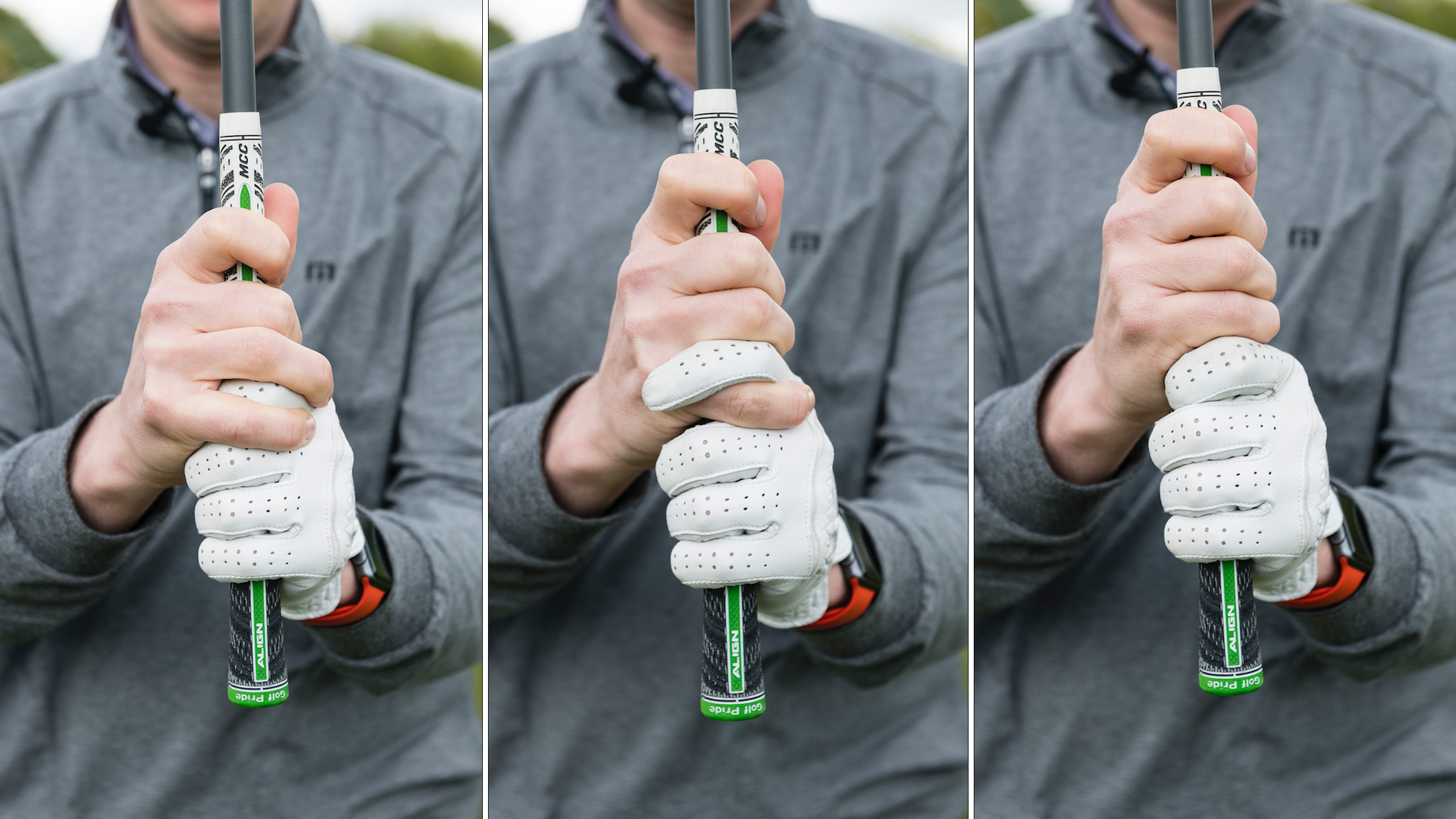
An overlap grip (left), an interlock grip (middle), and a baseball grip (right)
The overlap and interlock grips are the most common, with the overlap also known as the Vardon grip, after six-time Open champion Harry Vardon.
Tiger Woods and Jack Nicklaus both use the interlock grip, while the baseball grip is the least common of the three. As mentioned, there is no real right or wrong answer here, so test them out and stick with whichever feels most comfortable.
2. Basic technique
One you've decided which style of grip you are going for, it is time to learn the basics. Put your left hand on the club first (if you are right-handed), so that you can see two knuckles. You want your thumb to be slightly to the right side of the grip.
Get the Golf Monthly Newsletter
Subscribe to the Golf Monthly newsletter to stay up to date with all the latest tour news, equipment news, reviews, head-to-heads and buyer’s guides from our team of experienced experts.
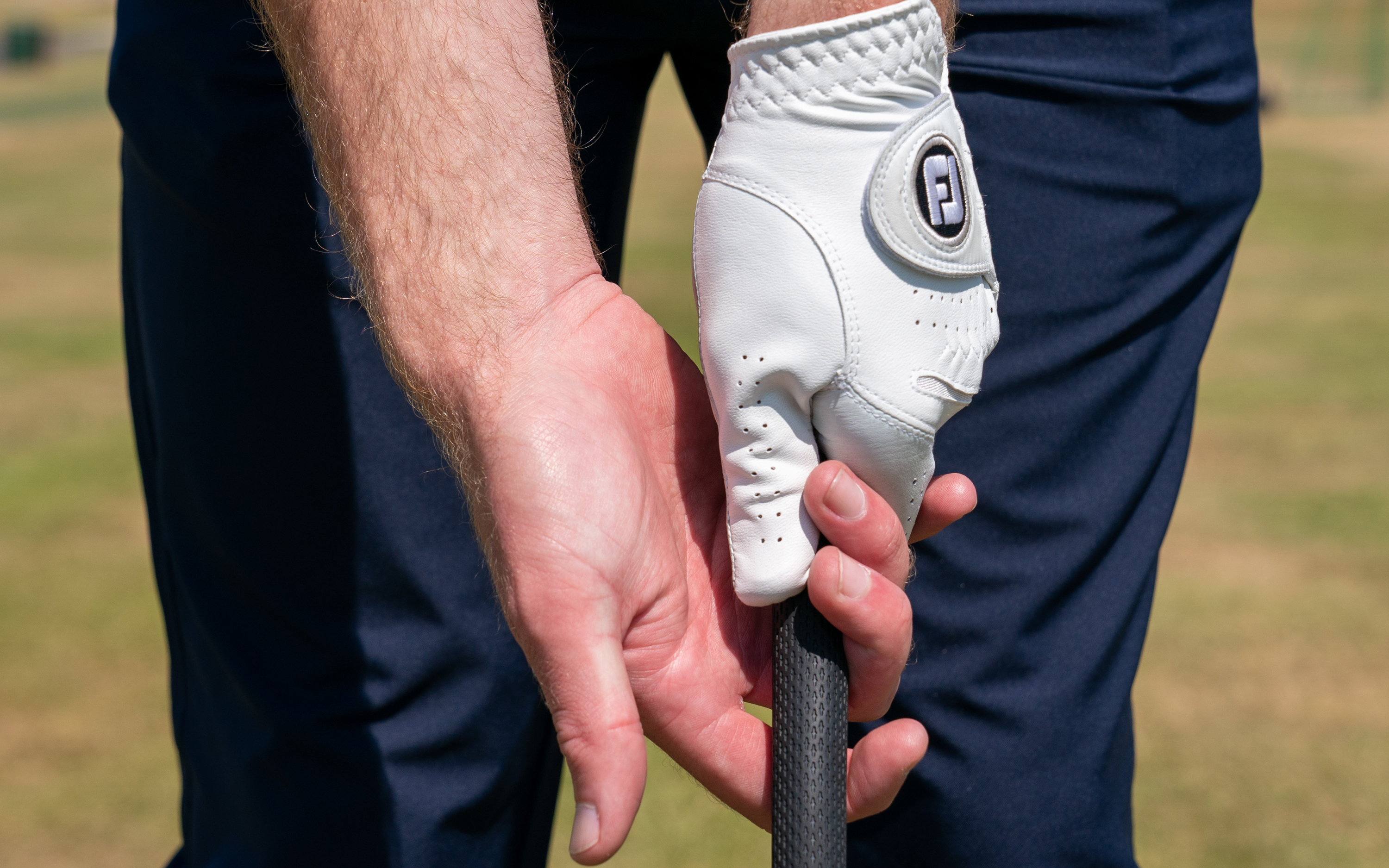
Slide the index finger on your right hand a little lower down the grip for extra control
Then, put your right hand on, with your index finger slightly lower down and just resting against the grip. This reduces tension. Put your right thumb over the grip so it is in line with your right arm. This will create a 'V' between your right thumb and index finger.
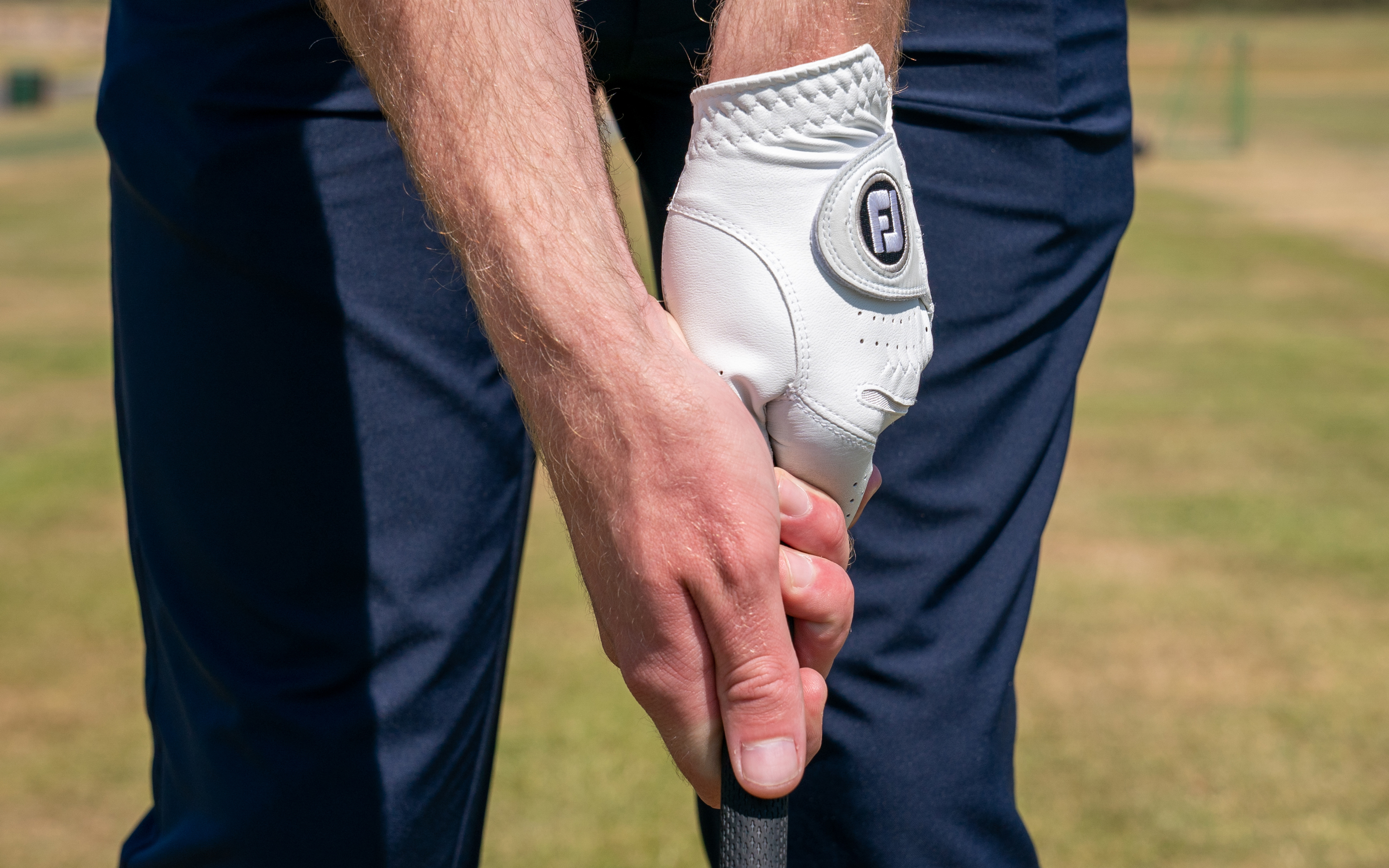
This is what a neutral grip looks like
3. The left hand
You want to grip the club in the palm and fingers of your hand. Too much in your fingers will lead to a strong grip and too much in the palm will be weaker, so it's important to strike the right balance.
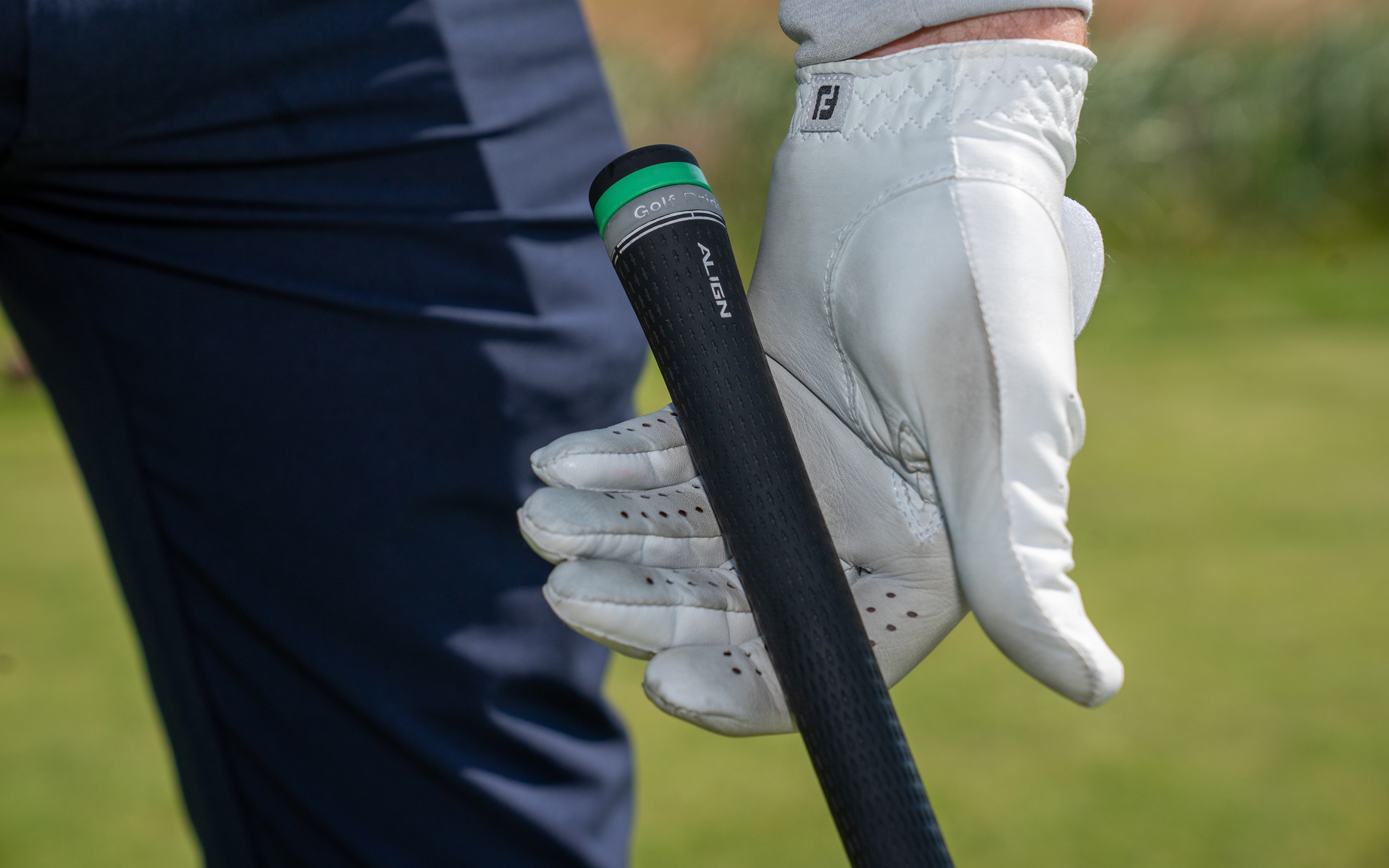
It's important to strike the right balance between holding the club in the fingers and palm with your lead hand
A good way to check is to take hold of the club with your left hand then remove all you fingers except the index. You should still be able to support the club between your index finger and the fleshy part at the base of your hand. If you can't, then you need to work on your left-hand grip.
4. Avoiding a strong or weak grip
Ideally, we want a neutral grip, as a weak or strong one will lead to inconsistency in your shots, especially under pressure in competitions. A strong grip is where you can see three or four knuckles on your left hand, with your right almost under the club.
Vice versa, a weak grip is where just one knuckle can be seen on your left hand and two or more knuckles can be seen on your right hand. For a neutral grip, you want to see two knuckles of your left hand and just one knuckle of your right hand.
5. Grip pressure
A common fault among golfers is they grip the club too tight, which results in a loss of power and fluidity. A common analogy is to imagine that you are holding a tube of toothpaste. You want to grip the toothpaste tight enough for it not to fall out of your hands, but not too tight so that the toothpaste gets squeezed out.
6. Checking your grip
A neutral hold on the club allows you to work on your swing knowing that your grip is solid. Even the best players in the world can develop bad habits, though, so it is always worth checking yours every few months.
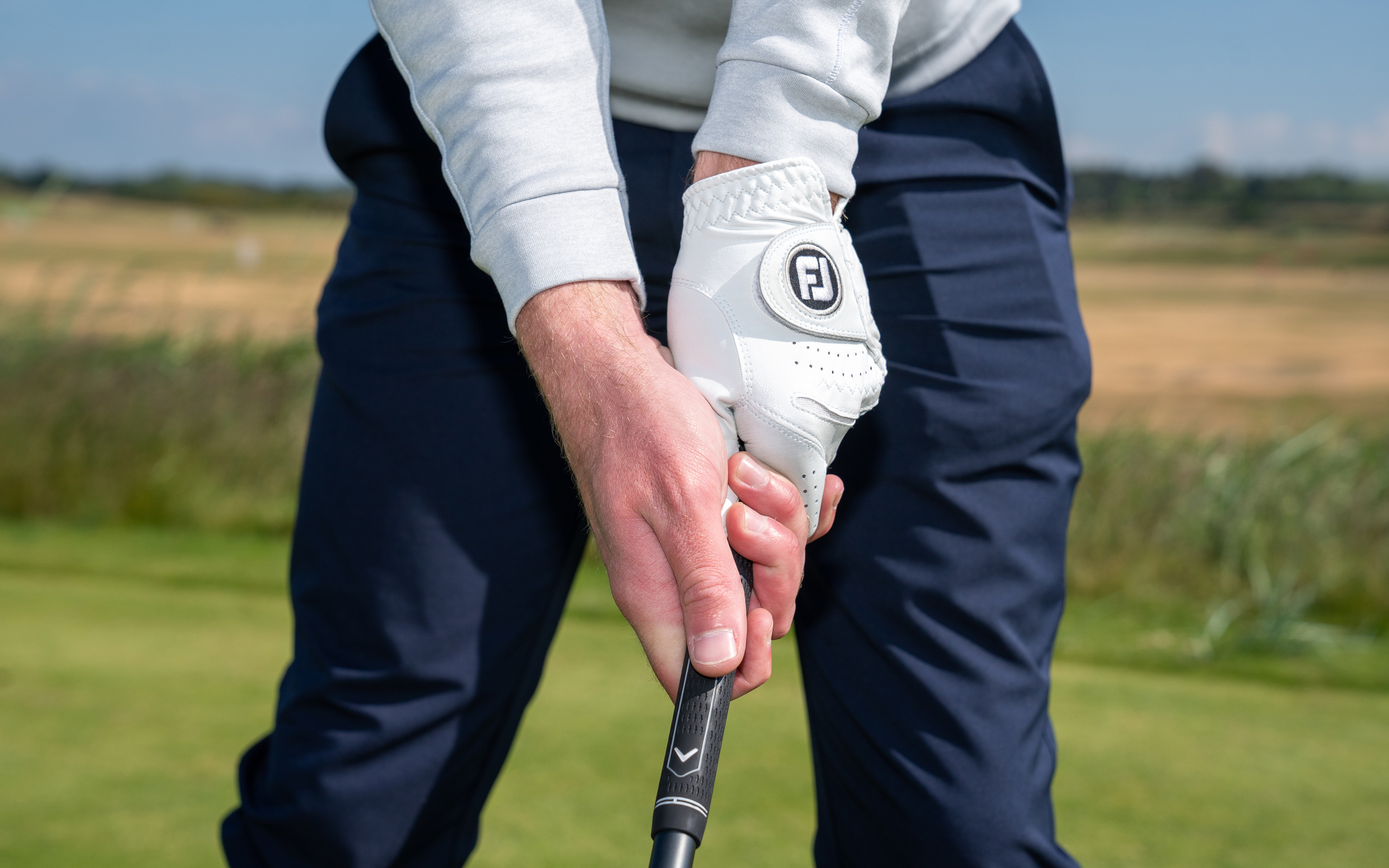
Get someone to take pictures of you or simply check it in the mirror. Another great way of making sure your grip is holding up is to buy a grip trainer that you can easily attach and detach to your golf clubs.
7. Grip size
The main problem with having the wrong-size golf grips is that they won’t allow the hands to work as they ideally should in the swing.
If your grips are too small, your hands can become too active which leads to inconsistency, greater shot dispersion, and typically too early a release of the club, often resulting in a hook or pull.
If your grips are too thick, your hands won’t be able to release effectively at impact and the most likely result will be a block, push or slice.
8. Don't let them get worn
You grip your golf clubs thousands of times through the season, and eventually they will suffer from wear and tear, losing their tackiness and some performance. Make sure you change your grips once a season or at least once every couple of years.
The grip is your only point of contact with the club remember, so make sure they're in as good a condition as possible. A worn set of grips may cause you to hold them tighter and the lack of tackiness will affect the feel you have on your shots.
To prolong the life of your grips, make sure to give them a good wash in warm water every now and then.

A lifelong golf fan, Andy graduated in 2019 with a degree in Sports Journalism and got his first role in the industry as the Instruction Editor for National Club Golfer. From there, he decided to go freelance and now covers a variety of topics for Golf Monthly.
Andy took up the game at the age of seven and even harboured ambitions of a career in the professional ranks for a spell. That didn’t pan out, but he still enjoys his weekend golf at Royal Troon and holds a scratch handicap. As a side note, he's made five holes-in-one and could quite possibly be Retief Goosen’s biggest fan.
As well as the above, some of Andy's work has featured on websites such as goal.com, dailyrecord.co.uk, and theopen.com.
What's in Andy's bag?
Driver: Callaway Mavrik Sub-Zero (9°)
3-wood: TaylorMade Stealth 2 Plus (15°)
Driving iron: Titleist U500 (17°)
Irons: Mizuno mp32 (4-PW)
Wedges: Titleist Vokey SM9 (50°, 54° and 58°)
Putter: Titleist Scotty Cameron Newport 2.5
Ball: TaylorMade TP5x
-
 I’ve Been To The Masters On Practice And Tournament Days… Here Are The Pros And Cons Of Each
I’ve Been To The Masters On Practice And Tournament Days… Here Are The Pros And Cons Of EachEvery day at Masters week is special, but certain days can be marginally better than others
By Michael Weston Published
-
 Could This 'Stumbled Upon' Equipment Switch Finally Land Rory McIlroy the Grand Slam?
Could This 'Stumbled Upon' Equipment Switch Finally Land Rory McIlroy the Grand Slam?Rory McIlroy made a golf ball change earlier this season that has reignited his wedge play and it could be about to pay off in the most dramatic possible way…
By Joe Ferguson Published